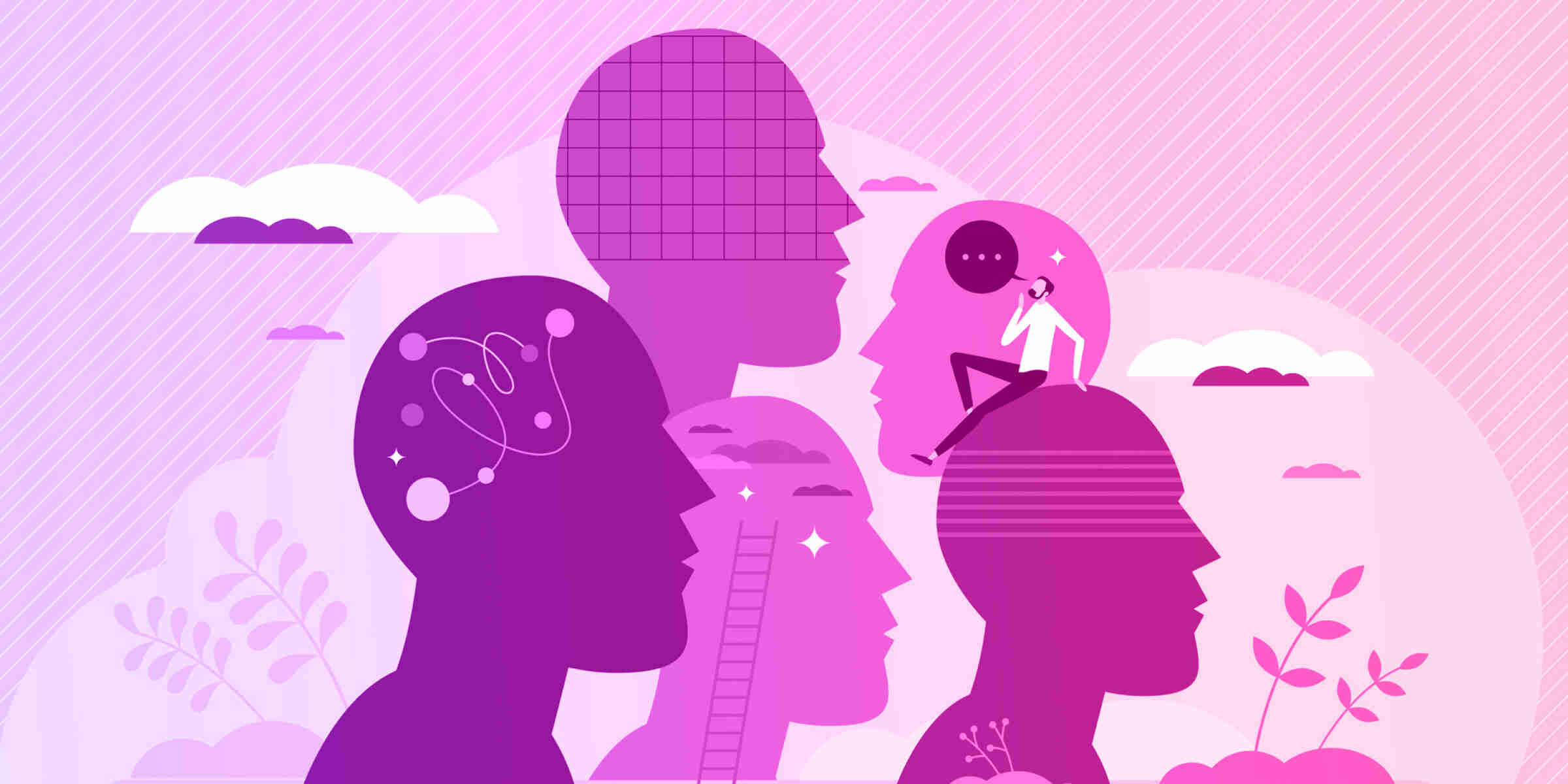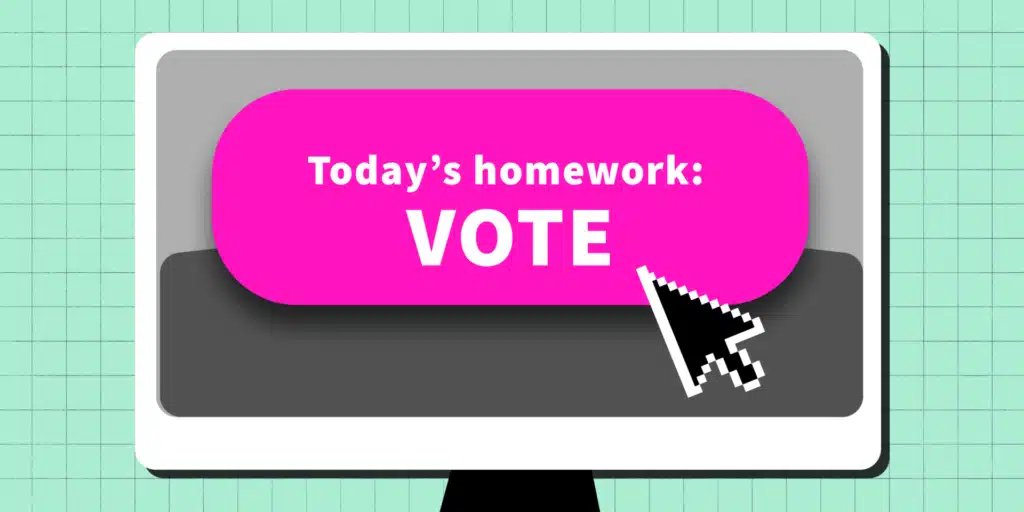The needs of students with learning differences have largely been overlooked in academia. Neurodivergent university students are less likely than their neurotypical peers to complete their degrees, yet their college enrollment numbers are on the rise. Therefore, it’s more critical than ever for educators to find effective ways to support neurodiversity in education and enable educational success for students with learning differences.
Who is considered a neurodivergent student?
The term neurodivergent describes a person who thinks, behaves and learns differently from most people in society. Some common signs of neurodivergence in university students include difficulty with eye contact, conversations or social interaction, fixation on certain routines and highly focused interest in a specific subject or object.
A neurodiverse group of people may have a mix of neurodivergent and neurotypical individuals. About 15 to 20 percent of people worldwide are recognized as neurodivergent. This means that a significant portion of the population have atypical ways of viewing the world and solving problems. According to Judy Singer, who first introduced the concept, neurodiversity is simply “a property of the human population of Earth.” Singer’s proposed neurodiversity movement was based on the idea that just as biodiversity benefits the planet, “neurodiversity is necessary for a sustainable, flourishing human society.” Singer also rejected the idea of autism being viewed as a disability. Instead, she pushed society to understand that the brain operates in different and equally valid ways.
Types of neurodiversity
A neurodivergent person may be diagnosed with one of several recognized conditions. Here are some of the more common diagnoses:
- Autism
- Asperger’s syndrome
- Dyslexia
- Dyscalculia
- Epilepsy
- Hyperlexia
- Dyspraxia
- Attention deficit hyperactivity disorder (ADHD)
- Obsessive-compulsive disorder (OCD)
- Tourette syndrome (TS)
Challenges and barriers: an autistic law student’s perspective
Neurodivergent students face numerous challenges in conventional classroom settings. A 2020 study of the experiences of university students with autism revealed several areas where they experienced barriers to learning. Systemic issues included access to diagnosis and lack of understanding in educators. Moreover, university students face daily challenges, like the transition into independence and balancing academic and non-academic responsibilities.
Orion Kelly, known on YouTube as That Autistic Guy, speaks openly about his experience as a neurodivergent law student. Kelly says the university environment “is extraordinarily overwhelming and can have a large impact on an autistic person.”
Neurodivergent students like Kelly struggle with sensory overstimulation on busy campuses. Kelly discusses his difficulties with “big fluorescent, bright lights that can’t be dimmed or they flicker, the screens, the speakers, the doors, the chairs, the layout.” Even deciding where to sit in a lecture hall can be fraught. “If I’m sitting in the middle, I’m stuck between people; that’s bad for my anxiety.”
For many neurodivergent students, the strain on their mental health becomes a further issue. To fit in with their neurotypical peers, they may attempt to mask their natural behaviors, which can lead to problems like anxiety, depression and suicidal thoughts.
Some neurodivergent students prefer learning in a virtual setting because it allows for flexibility and solitude. However, online learning also poses challenges. Students may have difficulty distinguishing colors on a screen, processing word order or focusing on the immediate task. Websites with busy pages featuring pop-ups or banner ads can be particularly overwhelming.
Neurodivergent students often need structure and clearly articulated expectations. Without sufficient support or accommodation, they may eventually become disengaged and see dropping out as either their only viable option or inevitable. As a law school graduate, Orion Kelly’s personal experience can be seen as a success story. However, he says, “in neurotypical conditions, I don’t achieve to the level that I could. I don’t reach my potential.”
What strengths do neurodivergent students bring to the table?
In response to a competitive hiring market, many organizations are trying to build more neurodiversity into their talent pools. They’re recognizing the value of having diverse viewpoints on their teams. Despite the deficit-based approach educators and employers tend to take towards neurodivergent conditions, these individuals possess unique qualities that they can use to their advantage.
- Neurodivergent individuals tend to be highly skilled at finding unique and innovative solutions to problems. At a personal level, a neurodivergent person may have developed their own unique strategies for learning or problem solving that work best.
- People who have lived with neurodivergence often tend to better understand the needs of diverse groups and can collaborate well to succeed as a team.
- Neurodivergent students often have hyperfocus. They may be able to see connections and patterns that often go overlooked by neurotypical individuals.
- On a team, the greater the diversity of perspectives and abilities, the higher the capacity for innovation, a quality critical for achieving a competitive advantage.
A primary value-add is the resiliency and creativity engendered by various perspectives and problem-solving approaches. From challenging the status quo to offering creative and innovative ideas, neurodiversity in the workplace and classroom benefits all.
How can we help neurodivergent students?
In law school, Orion Kelly says he received assistance from a department dedicated to supporting students with disabilities. However, every educator must understand the importance of supporting neurodiversity and equity in the classroom. Here are some ways to create an inclusive and supportive environment for your neurodivergent students.
- Create a judgment-free classroom. A sense of belonging builds confidence in all students and removes a significant barrier to engagement and learning. Active listening is a helpful strategy where the teacher uses body language and reiterates the speaker’s points to show they’re listening. Students should have options to use alternatives for communication beyond verbal or vocal.
- Get to know your students’ strengths and weaknesses. Solicit information from the student, their caregivers and treatment specialists about their abilities and potential challenges with classroom technology. Use this information to select proven teaching ideas that may best support their preferred learning method. Implement these strategies consistently and make adjustments based on regular feedback from the students.
- Incorporate students’ personal interests. As you solicit information about your students’ learning styles and needs, also seek to learn more about their personal interests beyond the classroom. Where possible, incorporate their areas of interest into your curriculum and lesson plans. Doing so will help neurodivergent learners maintain focus and motivation in your course.
- Diversify your teaching strategies. In lesson planning, consider students’ unique needs and adapt accordingly. Schedule time to check in with individual students and explore the relevance of discussion topics with them. The Universal Design for Learning framework provides best practices for working with students with learning differences.
- Present information incrementally. Experts recommend providing instruction in a step-by-step format, so the progression becomes less overwhelming. Students build connections in the subject matter and gain confidence as they make steady progress. The incremental approach also enables teachers to assess progress more readily. For both student and teacher, the learning process becomes more manageable.
- Commit to a pre-set schedule. Some neurodivergent students learn best with the support of an established, detailed plan. Provide a daily outline with a list of lesson objectives displayed for ease of viewing. This framework will help all students by directing their learning and helping them maintain or regain focus.
- Presume competence and expect success. Communicate expectations clearly and consistently to help students understand their learning goals. To keep them on track in a lesson, recap the previous learnings and present a breakdown of assignments. Provide support tools like deadline schedules, folders and checklists to help them organize themselves.
- Offer multiple ways for students to absorb information. To maintain an inclusive class environment, equip yourself with learning materials from various approaches. Empower students to find the strategy that works best for them. Consider a variety of media, including video, audio, written resources and hands-on activities.
- Celebrate neurodivergent people. Embracing neurodiversity means more than accommodating the needs of neurodivergent people; it also means recognizing the value of their unique contributions. Make efforts in the classroom to acknowledge your students’ strengths and point to great neurodivergent thinkers in history as exemplars.
- Work with your university’s accessibility office. These organizations are in place to support students, but they’re also a rich resource for educators seeking to remove barriers to learning in the classroom. They may host neurodiversity awareness events, deliver instructional training on learning differences or provide resources like this neurodiversity checklist from LaTrobe University.
- Use technology mindfully. While technology can provide flexibility in learning, it may cause sensory overstimulation for some students. Explore ways to accommodate individual student needs while using online teaching tools or multimedia. Provide students with options when engaging with technology. They may benefit from noise-canceling headphones or opportunities to watch or listen to media independently rather than in crowded rooms.
- Encourage the use of restful spaces outside the classroom. Identify retreat spaces on campus where students can get a break from the busy, noisy, brightly lit areas on campus. The principles of the Autism ASPECTSS™ Design Index aim to design spaces that limit sensory stimuli, which positively impacts neurodivergent and neurotypical students alike.
Supporting neurodiversity supports every student
When educators create learning environments that support neurodivergent students, all students benefit. Neurodivergent students often know what works best for them and only need the flexibility and freedom to incorporate their own study strategies into their learning. When educators take time to fully understand their neurodivergent students, they may receive the roadmap they need to navigate the students’ unique approach to learning and communicating.
Top Hat is committed to removing barriers to student success. Here are some ways our dynamic courseware platform supports neurodivergent students in higher education.
- Learn from anywhere: Our platform provides a comfortable virtual and in-person learning environment for students and educators to engage with one another. We offer several non-verbal communication options such as discussion boards, interactive polls and quizzes.
- Personalize the assessment process: Educators may provide extra time for either the whole class or select students to complete assessments. Plus, give students more than one attempt per question.
- Embed various sensory input into your assignments: Incorporate imagery and media into your assignments or textbook chapters. Give students a choice to fully engage with the material visually or as a complement to the written text.
- Make learning accessible: Our dynamic textbooks and assignments include alternative text on images in chapters for students using screen readers. You may also add ‘hints’ to sentences or questions that are likely to confuse students.
Top Hat strives to improve equity and access for students in higher education. We empower educators to deliver personalized, meaningful and equitable learning experiences that respond to the unique needs of all students.
Learn more about Top Hat’s commitment to accessibility and inclusion.


